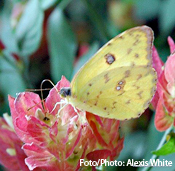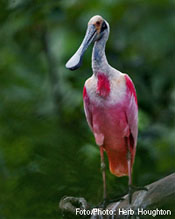







Now open by reservation for
private tours and school groups.
el.refugio.potosi@outlook.com








Now open by reservation for
private tours and school groups.
el.refugio.potosi@outlook.com
|
El Refugio de Potosí is custodian to the only sperm whale skeleton on display in Mexico. At nearly 18 meters, it is one of the largest on exhibit in the world.
Finally, we set the bones in the sun to drain their oil. In time, the sun did its work; too much in fact. S.O.S. to Lee Post, "The Bone Man", who arrived from Alaska to guide us further. Did you know there is a book with sperm whale assembly directions? "The Sperm Whale Engineering Manual"? Thank you Lee! The mighty force of the sea left some of the bones mangled and marred. We repaired damaged bones and fabricated the few missing bones using our own innovation of surf board blanks (carved and sanded to the correct shape and size) with a covering of polyester resin. And then there was help. Bows, applause and bravos to the many who generously became Bone Godfathers. Our own program of adopting individual bones to help fund the expenses of restoring, assembling and displaying the enormous skeleton. This task could not have been completed without the munificence of the bone godfathers. We are working on a project to permanently acknowledge you all. Moving the bones from one place to another became a repeated ritual until we eventually settled on the perfect spot.
SPERM WHALE BONE RECOVERY AND ASSEMBLY PROCESS
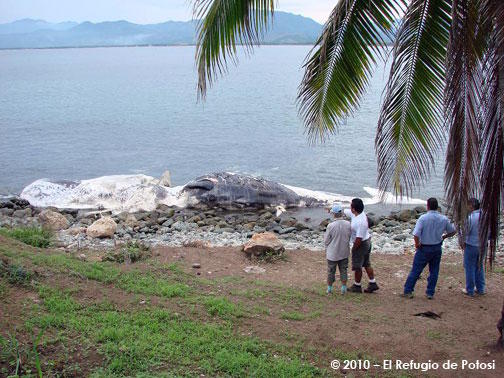
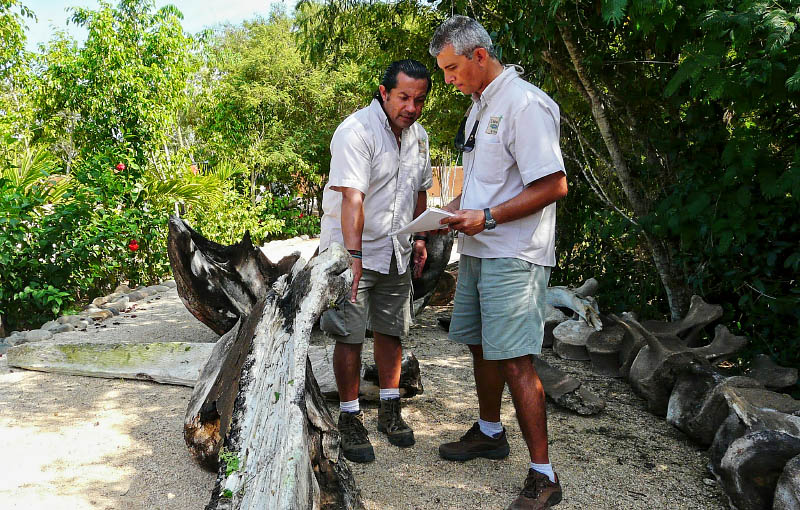
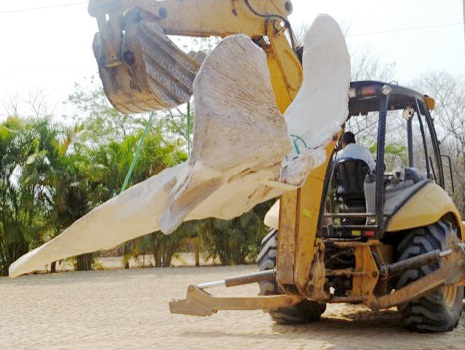
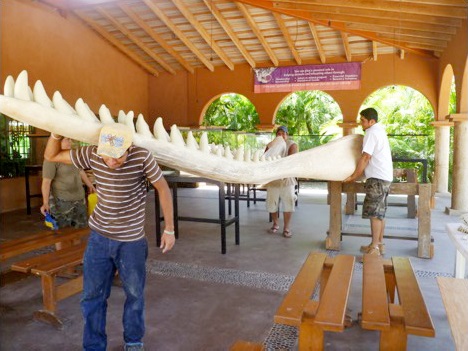
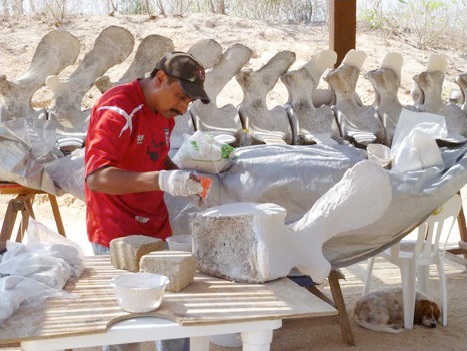
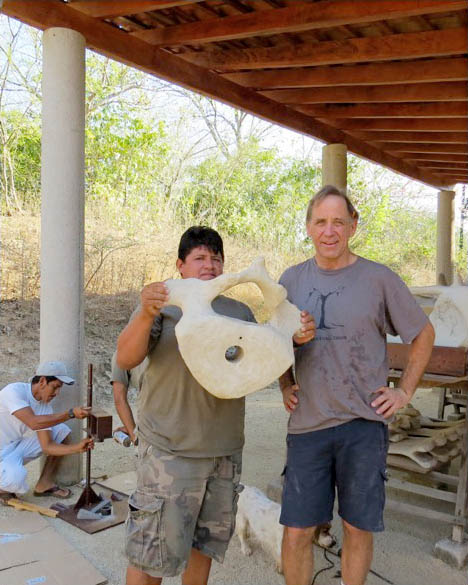
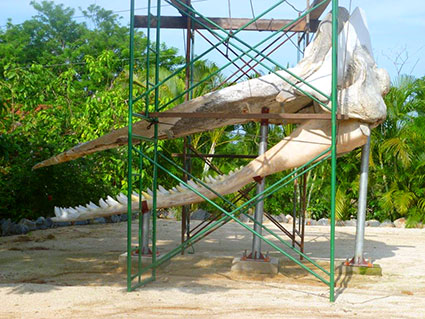
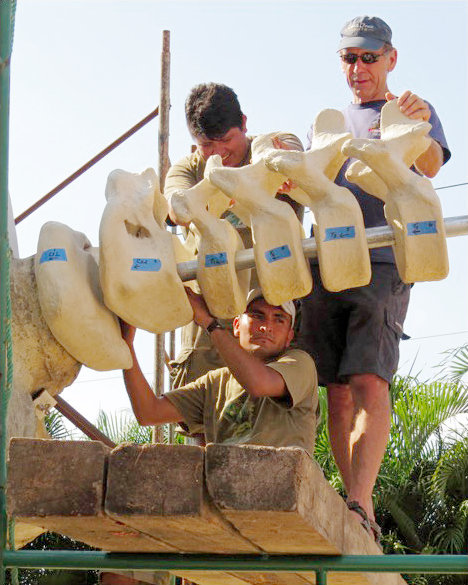
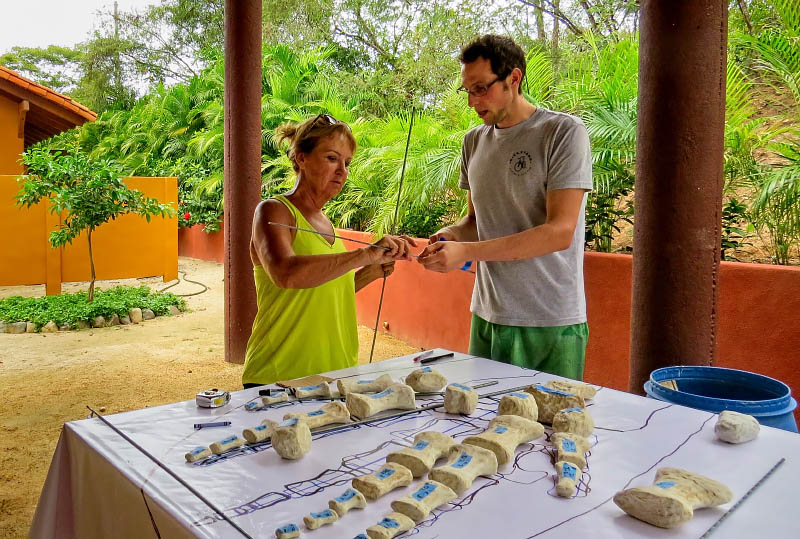
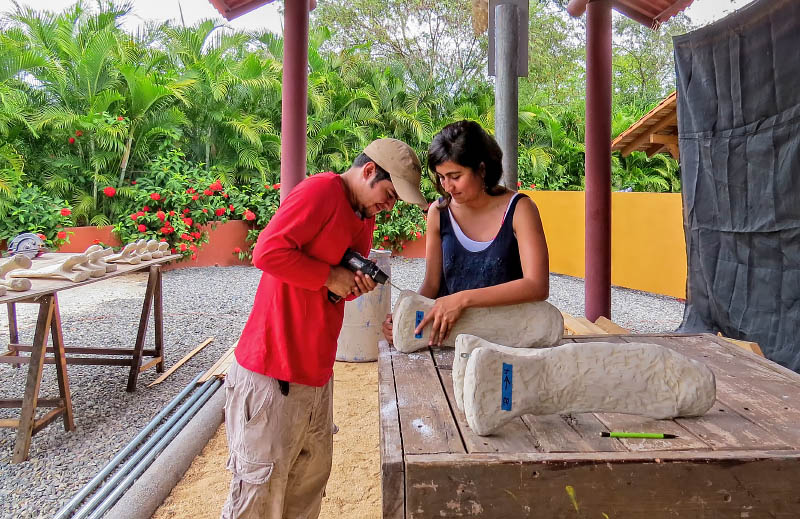
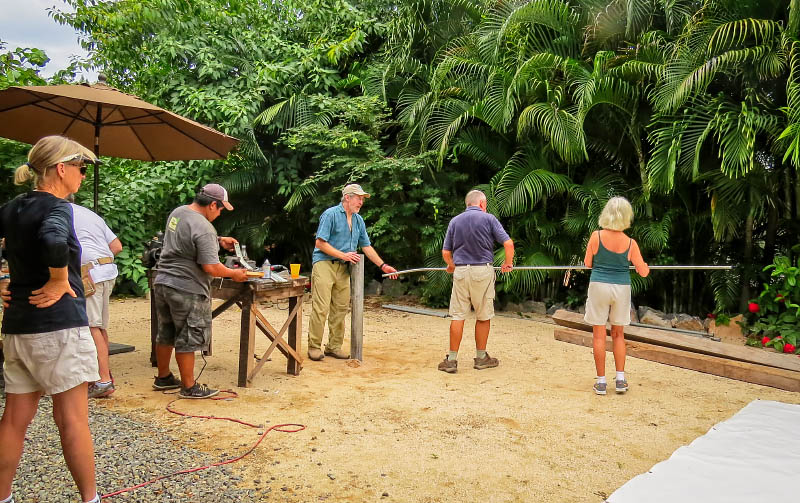
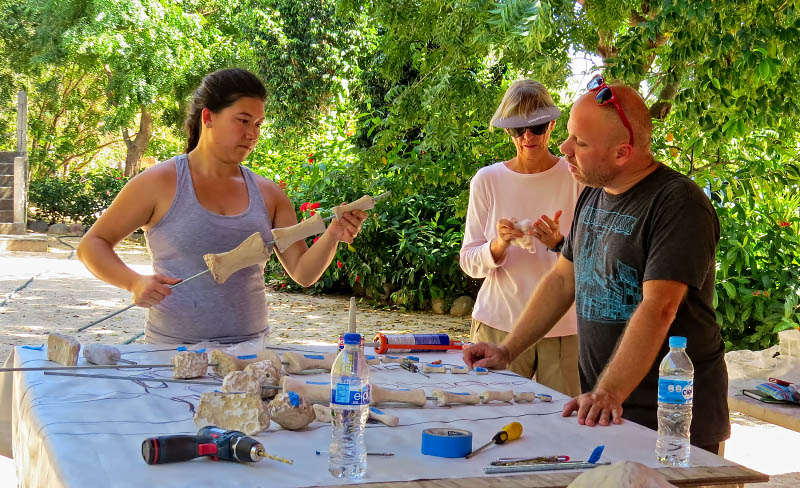
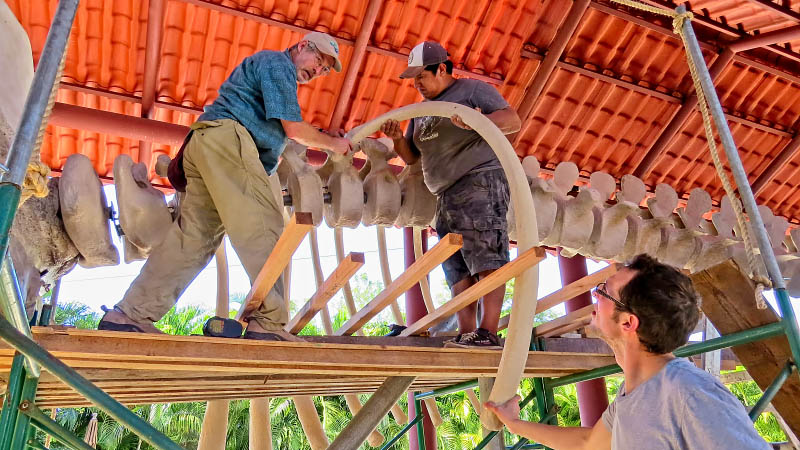
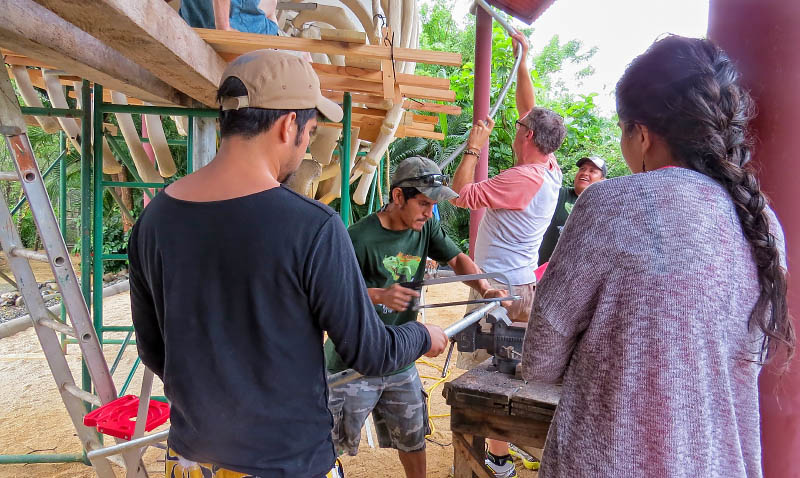
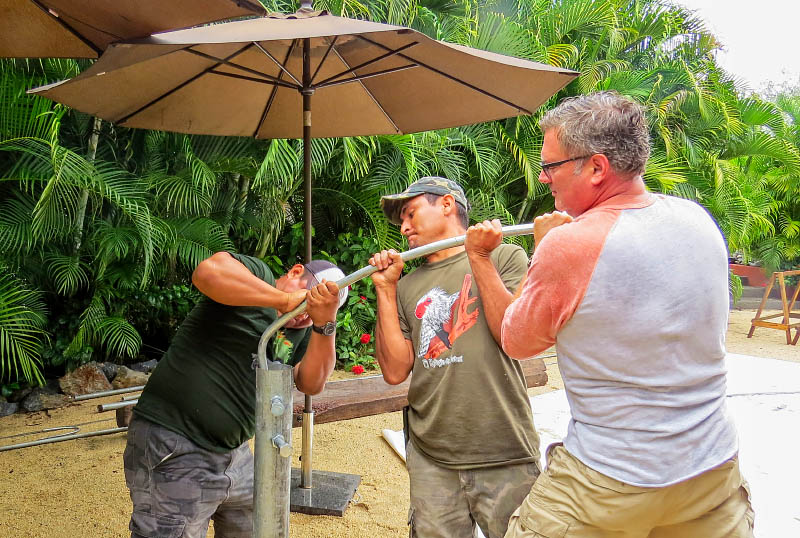
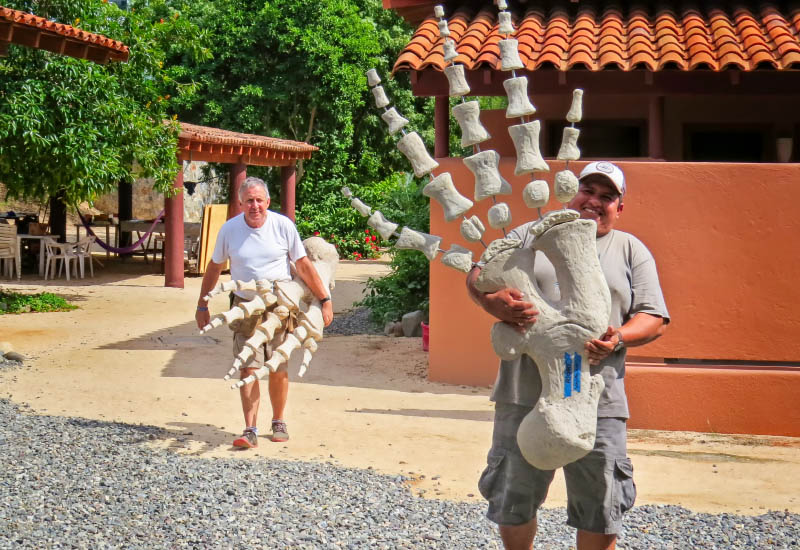
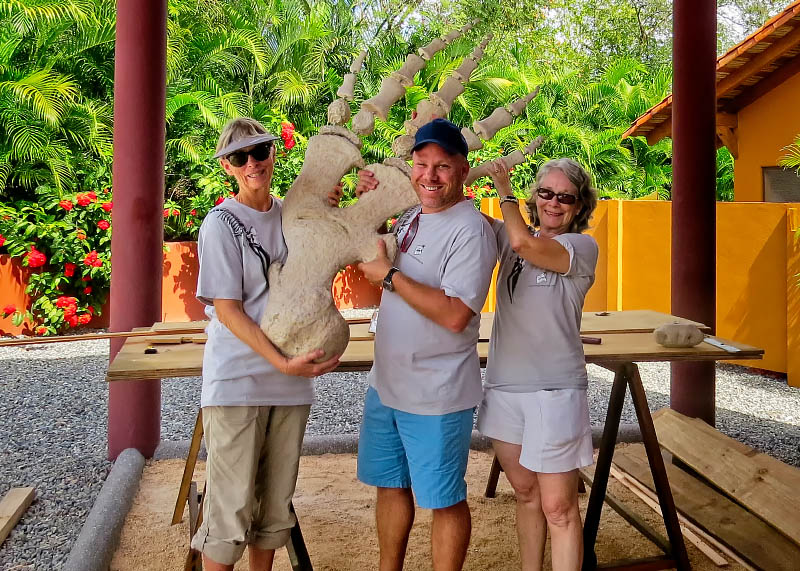
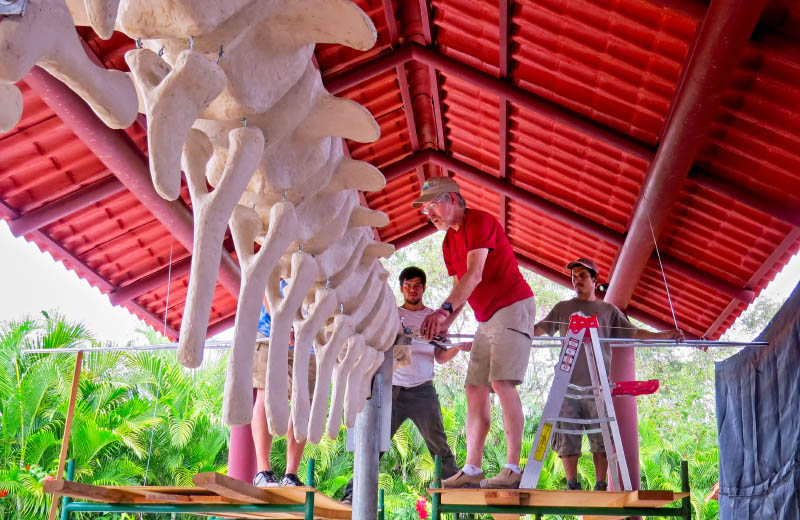
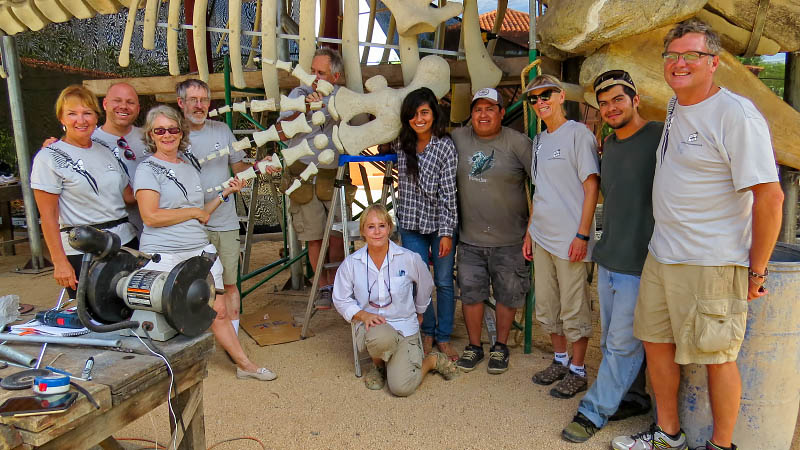
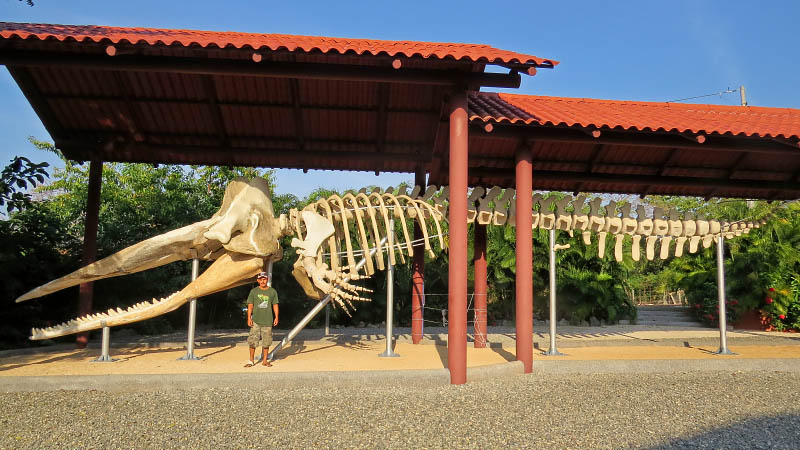
With the skull and mandibles finally settled atop steel tubes, Hood River Oregon's, Bob Smith, naval architect extraordinaire, arrived to take us through the machinations of threading giant vertebra on to large pipe, and (no small task), supporting the remaining skeleton. Who knew you were so inventive and persistent Bob!!! (When Bob suggested we bend the 2" diameter pipe to give an interesting shape to the spine, [surely he was joking], the crew rose to the occasion by inserting the pipe through the crotch of a huge mango tree and pushing! Lots of men, lots of pushing, minor damage to the mango tree and voila!!!! A huge pipe with a gentle spinal curve.) Protection from blasts of both tropical sun and tropical rain became the next imperative. Who wants to work on a whale skeleton beneath this sun? With creative solutions from Zihuatanejo Architect Jorge Espinosa, a roof was added. Happy days for the whale, the visitors and the workers! What a difference a roof makes! Jorge, we bow to you. Great ideas! And for the final chapter in the skeleton assembly marathon, Lee Post again returned from Alaska. David Evans came from Alberta. Volunteers from Playa Blanca joined in: Daniel, Barbara 2 & 3, Donna, Jim & Carolyn. Matt from Michigan. Brynden and Emily from Hood River. Isain and Dani from Mexico City. A community effort of learning and giving. With directions from Lee and muscle from David and problem solving by all, the final chapter of our whale story was written. And so he stands, majestically posed, tail aloft in a gentle dive, to welcome the school kids, the morbidly curious, the surprised visitor, and all who pass through our doors. Everyone who has visited our whale thanks all of you for your efforts and generosity in making this a real story with a strong ending. Oh yes, we named him Huamilule, after the promontory that somehow lured him to Barra de Potosí. A final note, to our own Javier Campos, who in his words, became a man during the collection of the whale. A young man who did not live long enough and did not get to see the rewards of his efforts. He is missed every day. 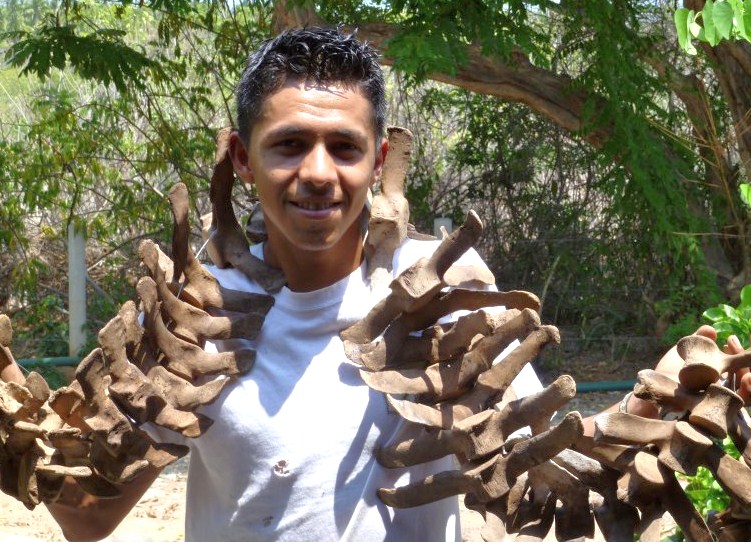
|

